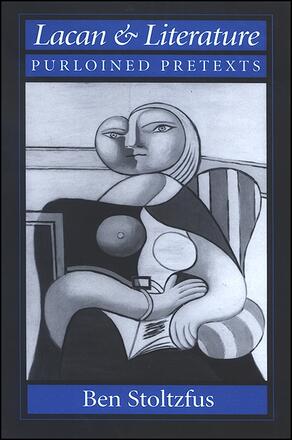
Lacan and Literature
Purloined Pretexts
Alternative formats available from:
This book of literary criticsm uses Lacanian psychoanalytic theory to explicate Roland Barthes, Albert Camus, Ernest Hemingway, D.H. Lawrence, and Alain Robbe-Grillet.
Description
Winner of the 1997 Gradiva Award for Best Book (Cultural Arts Related) awarded by the National Association for the Advancement of Psychoanalysis (NAAP)
Using Lacanian psychoanalytic theory in order to uncover the relationship between literature, reading, and the unconscious, this book argues for a special affinity between a text and its reader. This process strives to unveil the disguises of tropic language in order to generate manifest meaning from latent content. Focusing on five twentieth-century writers: D.H. Lawrence, Ernest Hemingway, Albert Camus, Roland Barthes, and Alain Robbe-Grillet, this book shows how Freud's theories of condensation and displacement in dreams match Lacan's uses of metaphor and metonymy in language. Despite the different backgrounds of these authors from America, England, and France, the unifying theme is that the unconscious (because it is structured like language) is the voice of the (m)Other disguised in figurative language.
Ben Stoltzfus is Professor Emeritus of French, Comparative Literature, and Creative Writing at the University of California, Riverside. He is the author of The Eye of the Needle; Black Lazarus; Red White & Blue; Alain Robbe-Grillet and the New French Novel; Georges Chennevierre et L'Unamisme; Gide's Eagles; Gide and Hemingway: Rebels against God; Alain Robbe-Grillet: The Body of Text; Alain Robbe-Grillet: Life, Work and Criticism; and Postmodern Poetics: Nouveau Roman and Innovative Fiction.
Reviews
"This is an elegantly written and well argued analysis and interpretation of metaphorical and metonymic riddles and equations in a series of paradigmatic texts. Stoltzfus applies close reading techniques in a playful, i.e., both detached and attached rather than pedantic manner. At no point does the reader of this book feel lost in the complexity of the argument or crushed by the weight of theoretical jargon. The strength of this book is its unobtrusive yet seducing pedagogy that is firmly rooted in the author's erudition and teaching experience." — Raymond Gay-Crosier, University of Florida